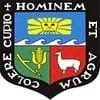Economics of Poultry Feeding: From least cost to maximum profit feed formulation

Dr. Afrouziyeh has been of great service to provide a recipe and instruction for creating a non-linear least cost formulation for those that are less certain of the nutritional content of their feeds. The more variation one experiences in the ingredients they buy, the more chance there is, with linear programming, to reach a feed that fails dramatically, as Dr. Waldroup pointed out earlier. When using NIR, for example, with low variation because one has measured the needed values, the least cost linear formulation will give about the same solution as the non-linear as the linear assumes no variation which is approached by low variation.
One other area worth exploring is when to change from one feed to the next, less dense and usually less expensive diet. Real savings can be made there, as well. The practice when Park and I first met was to change feeds around 21 days of age, now it is much earlier. The question that we need to answer is how early. Most Nutritionists have a first diet that they have spent a lot of time developing and, even if lower costs could be generated, the amount fed keeps the cost mitigates the risk involved in making it cheaper. But changing from that diet at the earliest acceptable time will help reduce costs.
Frank Ivey
.jpg&w=3840&q=75)

One Health - International Rendering Symposium



I made a video and provided an update on different managerial targets in poultry feeding chronologically. I have discussed the least-cost and maximum profit feed formulation in this video. In addition, I have focused on the most recent (2020) targets which have been defined as managerial targets in the field of poultry nutrition.
The video is accessible via the following link: https://youtu.be/oXQaMWv6OiY.
I welcome further discussion and constructive comments on this topic.

Dear Frank, I have been reading what the Feed2Gain does and I would like to know if it is possible to see an example of a printout with the results and information it gives. Also if there is a demo available. Thank you and regards

I am enjoying very much all this discussion. Thanks, Dr. Guevara for bringing your paper to this forum. Just to reinforce, least cost feed formulation starts with different paradigms that are difficult to make broad comparisons. The ingredient data base, with nutrient composition is, most of the time, not adjusted in a real time situation. Also, not all companies have strong laboratory support to update values based on energy (calculated) and nutrient changes (and anti nutritional components - soybean antitrypsins). Besides, each nutritionist has his own energy and nutrient requirements, per phase. The energy and nutrients maximum and minimum vary. The phases are not the same, the breeds vary, even in the same company, etc. So, to get to the point to calculate the final minimum cost of broiler production (cost or margin), we need to go and find environmental interference to the equation, as Alvaro indicated, to reinforce the real gains. By the end of the day, as a business, the companies need to look for the maximum benefits of its assets, that will come, besides what was said before, on feed conversion per square meter, per year. I can have the best cost calculated, but I am not using efficiently the space that the company has available. This is the reason that least cost feed formulation is a tool that must be customized and when we use non linear approach, the customization is more important yet.
.jpg&w=3840&q=75)

One Health - International Rendering Symposium













